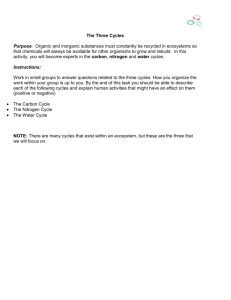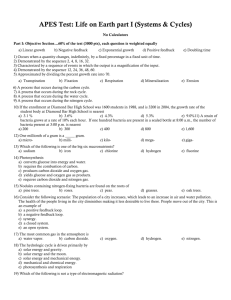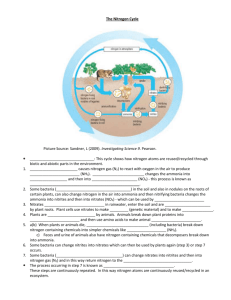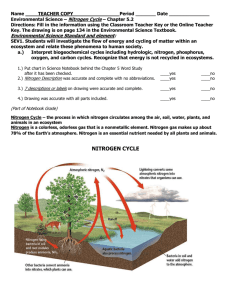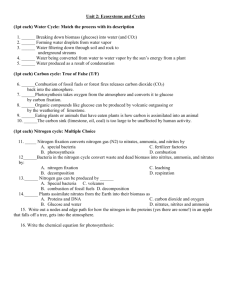File
advertisement
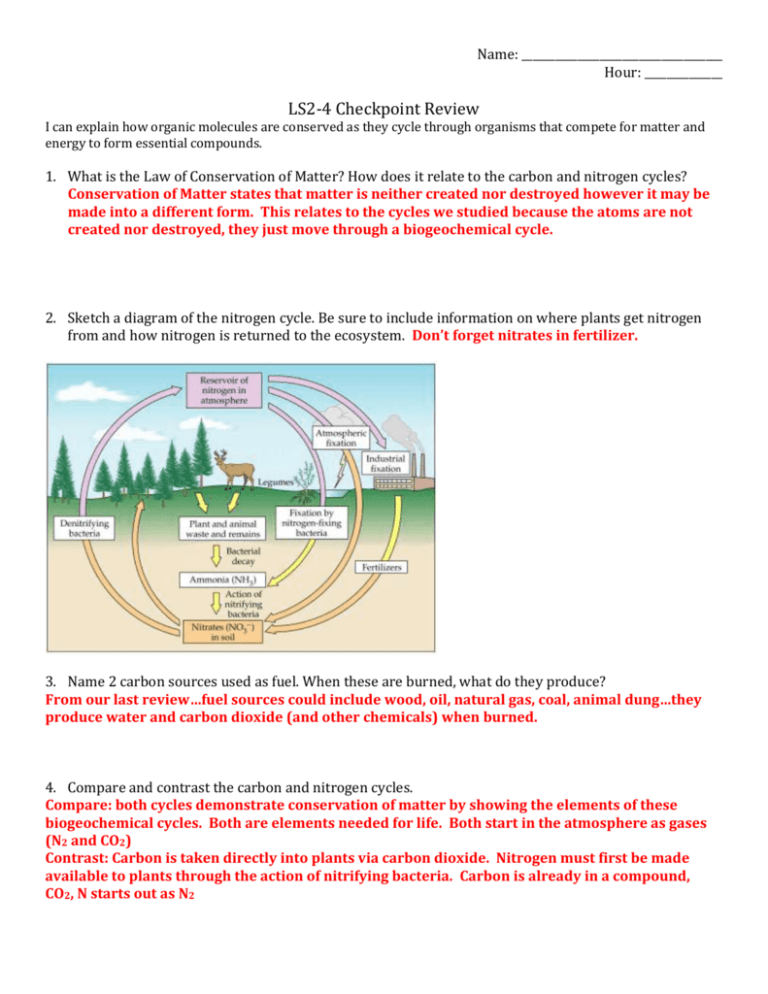
Name: ____________________________________ Hour: ______________ LS2-4 Checkpoint Review I can explain how organic molecules are conserved as they cycle through organisms that compete for matter and energy to form essential compounds. 1. What is the Law of Conservation of Matter? How does it relate to the carbon and nitrogen cycles? Conservation of Matter states that matter is neither created nor destroyed however it may be made into a different form. This relates to the cycles we studied because the atoms are not created nor destroyed, they just move through a biogeochemical cycle. 2. Sketch a diagram of the nitrogen cycle. Be sure to include information on where plants get nitrogen from and how nitrogen is returned to the ecosystem. Don’t forget nitrates in fertilizer. 3. Name 2 carbon sources used as fuel. When these are burned, what do they produce? From our last review…fuel sources could include wood, oil, natural gas, coal, animal dung…they produce water and carbon dioxide (and other chemicals) when burned. 4. Compare and contrast the carbon and nitrogen cycles. Compare: both cycles demonstrate conservation of matter by showing the elements of these biogeochemical cycles. Both are elements needed for life. Both start in the atmosphere as gases (N2 and CO2) Contrast: Carbon is taken directly into plants via carbon dioxide. Nitrogen must first be made available to plants through the action of nitrifying bacteria. Carbon is already in a compound, CO2, N starts out as N2 5. Describe how plants get nitrogen (both natural and artificial methods). How does this relate to the nitrogen cycle? Explain your answer. 1. Nitrification: bacteria convert nitrogen gas into nitrogen compounds (like nitrates) that are usable by plans. 2. Lightning combines atmospheric nitrogen with oxygen to form nitrogen oxides. These chemicals combine with rain to form nitrates, which are usable by plants. 3. Artificially produced nitrates (in fertilizers) 6. Briefly describe the water cycle. You may use your own copy of the water cycle that we already did on Tuesday. Use the diagram from Tuesday. Be sure to mention the liquid and gas phases of water. 7. For the following biogeochemical cycles, name where it enters and exits the biotic portion of the cycle: a. Water cycle: enters through photosynthesis, exits through respiration, perspiration, urination, and transpiration b. Carbon cycle: enters through photosynthesis, exits through respiration c. Nitrogen cycle: enters through nitrifying bacteria and exits through denitrifying bacteria. Remember this?
